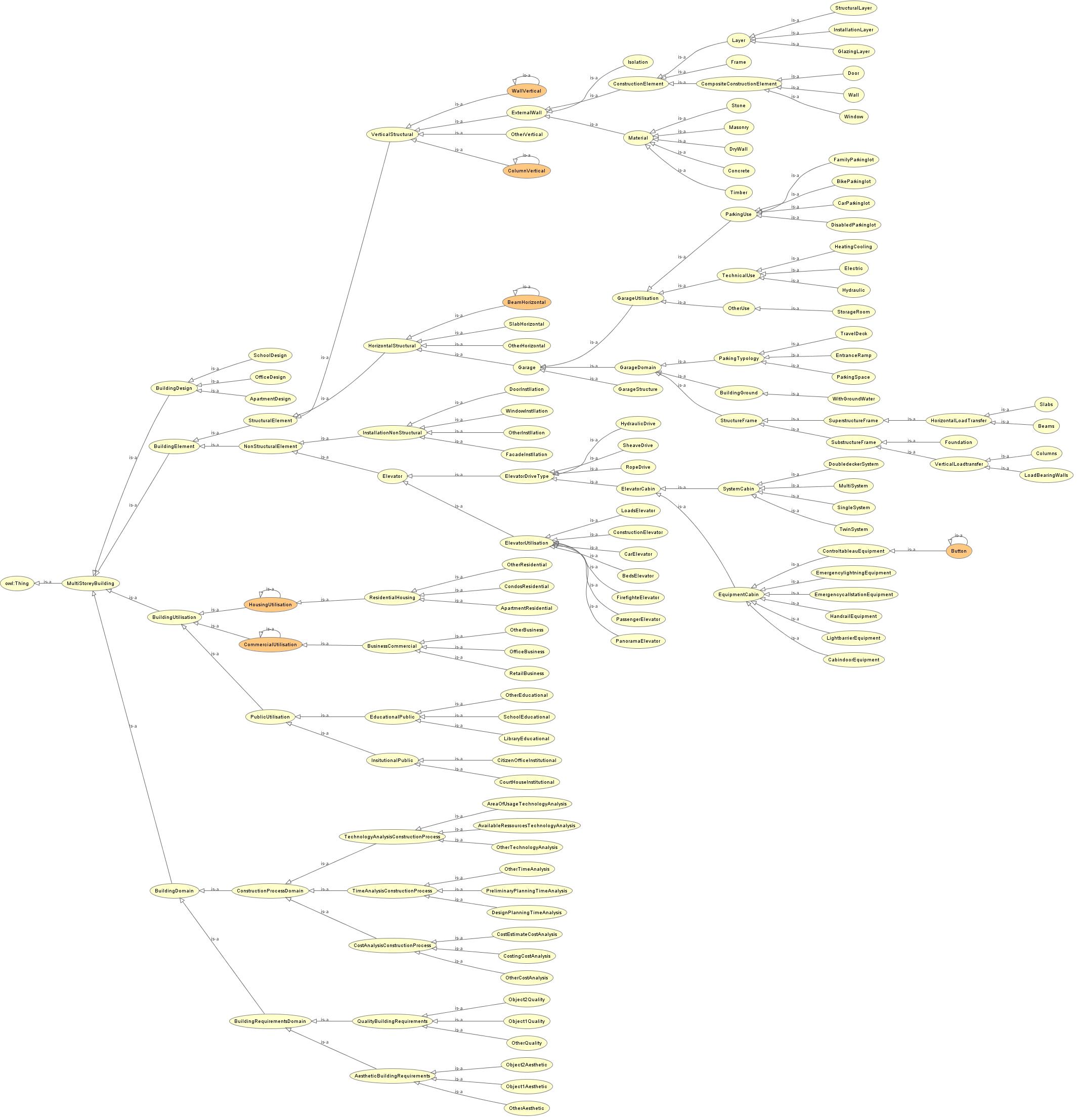In order to integrate the initial engineered models with each other (the multi-story building, the external wall, the underground parking ramp and the elevator), we first have to build a global ontology. In order to merge these ontologies, its necessary to change the hierarchies within and to create new subclasses as well as properties for one single urban concept.
The multi-story building was chosen as the fundamental ontology, as the model itself represents the core of our urban concept. The other models needed then to be adjusted, in order to be compatible with multi-story building, since they are all highly dependent on the size and utilization of the main model. Before merging the ontologies, all repetitions and redundancies were cut out,. Additionally, the descriptions of the relative domains and subclasses were adjusted.
The three sub-ontologies fit perfectly into the multi-story building main-ontology as elements of the subclasses. One of the first subclasses of the multi-story building is BuildingElements. As second instance, the BuildingElements were divided into StructuralElements and NonStructuralElements. Since the component elevator is a non-bearing element, its ontology was aligned within the NonStructuralElements. The StructuralElements were sub classified into HorizontalStructural and VerticalStructural. The external walls have been placed into the subclass VerticalStructural of StructuralElements, as it is obviously a vertical bearing element. The ontology of the underground parking ramp model was aligned with the subclass HorizontalStructural, within the StructuralElements. The underground parking ramp can be seen as one horizontal bearing volume underneath the multi-story building. The idea behind this, is that the whole ontology describes a building project that can be adjusted to different utilizations as shown in the design options.
The four ontologies have two high performance criteria in common: the capacity and the utilization. Depending on these two criteria, all the elements change their data proportions. We decided not to merge the utilization as one subclass of all ontologies, because this would change the hierarchy of the other subclasses and also create many redundant and repetitive sub classes. The focus of the merged ontologies is the building as a construction with its construction elements. In that case, the high performance criteria only influence the numerical data properties of the objects and have the utilization influence, which does not necessarily change the construction.
